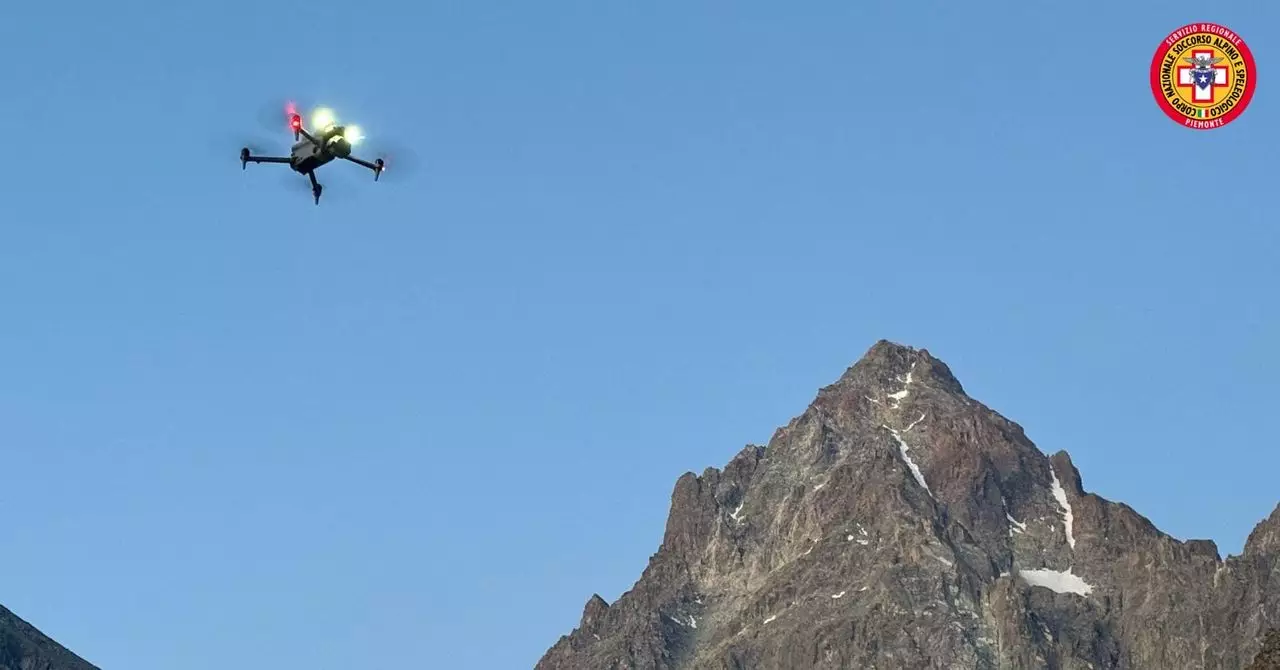For centuries, human endurance and intuition have been the backbone of mountain rescue missions. Teams brave treacherous terrains, unpredictable weather, and tenuous conditions to locate missing hikers. However, as impressive as these endeavors are, they are often hampered by limitations in time, access, and sheer volume of terrain. The recent advent of artificial intelligence (AI) integration into rescue operations marks a revolutionary shift—effectively redefining what is possible in search and rescue scenarios.
The case of the missing hiker on Italy’s Monviso peak exemplifies this shift with stunning clarity. Using traditional methods, it could have taken weeks or even months to piece through thousands of images and locate a single helmet amid jagged rocks and snowfields. Yet, AI transformed a task that would have been practically unmanageable into a matter of hours. This is not just a technological upgrade; it signifies a seismic leap toward efficiency, safety, and success rate enhancement in mountain rescue.
The transformative strength of AI lies in its capacity to analyze vast datasets rapidly and with remarkable accuracy. When the CNSAS, Italy’s national alpine rescue team, deployed drones equipped with AI-powered image recognition, they achieved what would have been an insurmountable challenge through human effort alone. Analyzing 2,600 frames taken over a limited window of time, the system flagged suspicious pixels—tiny anomalies that indicated the presence of a helmet—within hours, where human eyes might have labored for weeks or months. This paradigm shift is poised not merely to accelerate rescue operations but fundamentally to improve their outcomes, with lives and dignity preserved by swift intervention.
The Interplay of Human Expertise and Machine Intelligence
It would be reductive to suggest that AI operates independently, replacing humans in search and rescue missions. Instead, the most effective approach emerges from a nuanced partnership: technological precision combined with human intuition and experience. In the Monviso operation, drone pilots and expert mountain rescuers worked symbiotically, leveraging AI insights to focus their efforts more strategically.
The significance of this collaboration cannot be overstated. Human rescuers bring critical contextual understanding, navigational skills, and decision-making prowess, while AI tools handle the heavy lifting of data crunching and pattern recognition. This synergy enables rescuers to avoid false positives and minimizes dangerous, time-consuming exploratory missions. The AI’s ability to identify pixel-level differences—like a helmet colored distinctly from natural surroundings—acts as a guide, dramatically narrowing search zones and reducing the exposure of personnel to hazardous conditions.
Furthermore, this integrated approach emphasizes the importance of training and technological literacy among rescue teams. As Isola, the drone pilot, highlighted, the deployment of AI alongside drones has been a gradual process, refined over several years. It reflects a broader recognition that future rescue missions will depend on continuously evolving skill sets, where technicians, pilots, and rescuers are as crucial as the AI solutions they utilize. This evolution underscores a vital truth: technological advancement does not diminish human capability but amplifies it.
The Broader Implications and Ethical Considerations
The impressive speed and accuracy demonstrated in this rescue operation carry broad implications beyond individual incidents. AI’s integration into search and rescue operations hints at a future where technology can preemptively identify danger zones, predict hazardous events, and even prevent tragedies before they occur. It elevates the role of data, not just in immediate rescue scenarios but in holistic risk management and landscape monitoring.
However, embracing this new frontier is not without its ethical and logistical challenges. Relying heavily on AI systems raises questions about data privacy, the potential for algorithmic bias, and the importance of human oversight. For example, the AI system’s success depends heavily on the quality and diversity of its training data; otherwise, it risks missing subtle nuances or falsely identifying false positives. Ensuring that such systems are transparent, accountable, and continuously updated remains paramount.
Moreover, there is a philosophical debate about the extent to which technology should influence life-and-death decisions. While AI can streamline operations and improve accuracy, it must serve as a tool to enhance human judgment—not replace it. Ensuring that rescue teams retain the final say and moral responsibility is crucial to maintaining trust and ethical integrity in these life-saving endeavors.
The integration of artificial intelligence into mountain rescue operations signifies a bold step toward more effective, faster, and safer rescue missions. As demonstrated in the Monviso case, AI’s ability to analyze thousands of images within hours transforms traditionally grueling search strategies into streamlined efforts that maximize survival chances. This technological leap, rooted in a careful partnership between humans and machines, promises a future where tragedy can be prevented or mitigated with unprecedented efficiency—if managed thoughtfully and ethically.

